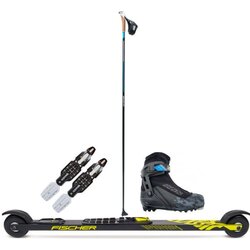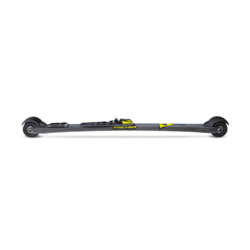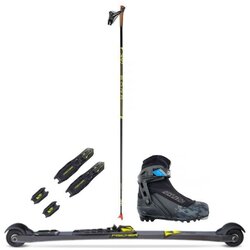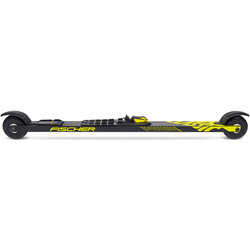V2 XLC9848 Classic Rollerskis
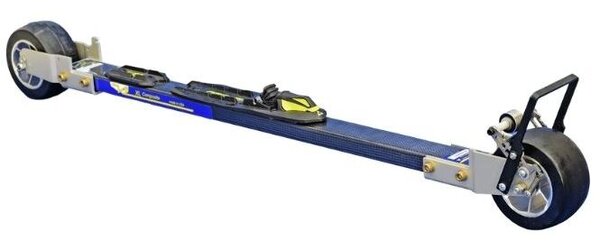
Details
The XLA9848 and the XLC9848 are the latest versions of the popular V2 Terra Ski. The Terra was a favorite of Olympic Champion Kristina Smigun as well as several Russian National Ski Team skiers.
The new XLC Elite roller skis are the best of everything we have learned from 30 years of building roller skis. The XLC are available in Freestyle, Classic and Combi skis.
The XLC are the lightest and the most snow like solid rubber wheel roller skis we have ever produced. The vibration damping of the new composite frame is exceptional, and, coupled with the shock absorbing wheel forks, the XLC makes skiing on pavement as similar to skiing on snow as possible. In addition to lower ski weight and the improved vibration damping, another advantage of the XLC is a lower center of gravity. The clearance from the pavement to the bottom of the shaft is the same, but with the strong construction we can make the shaft thinner, so the top of the shaft is lower, making the skis more stable. Safety is high priority at Jenex, so all XLC models are available with our patented brakes and speed reducers. For skiers weighing over 90 Kg (199 pounds), we offer the XLC in a Heavy Duty (HD) version that is about 25% stiffer.
COMPOSITE FIBERS: Over the last twenty years we have tested most high strength synthetic fibers, including the many variants of Carbon, S glass, E glass and Aramid. All of these fibers have strengths and weaknesses. Aramid (KevlarTM) fibers have high tensile strength, dampen vibration and re extremely abrasion resistant, but are very weak in compression. Carbon is extremely stiff and strong in both tension and compression, but breaks very easily from impact, which is why so many Carbon ski poles break in sprint and mass start races. Carbon is a great material, but to prevent impact failure Carbon fiber shafts need a core with good energy absorbing properties and perform best when combined with more impact resistant fibers. And that’s what we have with the XLC.
THE CORE: The core material is the foundation of a roller ski shaft and we have tried about every material available including a variety of metal cores. We have used organic cores like Baltic birch, Italian poplar, Balsa and many synthetic cellular cores. We now know from extensive experience that for roller skis, cellular cores are superior to metal cores. The XLC uses the best core we have tested to date. However, fabricating the cellular core is time consuming and expensive compared to an extruded core.
BONDING: Composite structures need a very strong bond to both the fibers and the core. Bonding high strength fibers to a metal core can be more difficult than bonding to a porous cellular core. The metal must be aggressively etched for the fibers to bond properly. The cellular core we use has thousands of microscopic pores per square centimeter, and therefore the epoxy penetrates and bonds extremely well the core. The epoxy that binds the fibers to themselves and to the core has a tensile strength about 3X greater than conventional epoxies and is the strongest commercially available.
The forks are made from aluminum and protected by a clear anodic coating. The wide 98mm wheels make them an excellent choice for non-paved surfaces and chip sealed roads. The wide wheel makes them the most stable of our two-wheeled classic skis. The XLC9848 is now available in two speeds: medium and slow. The rolling resistance in the 9848 slow free wheels is increased using two of our patented ISR (internal speed reducer), each weighing only 10 grams.




